The five-second rule: Growing germs for science
Here’s how to build a low-cost incubator at home
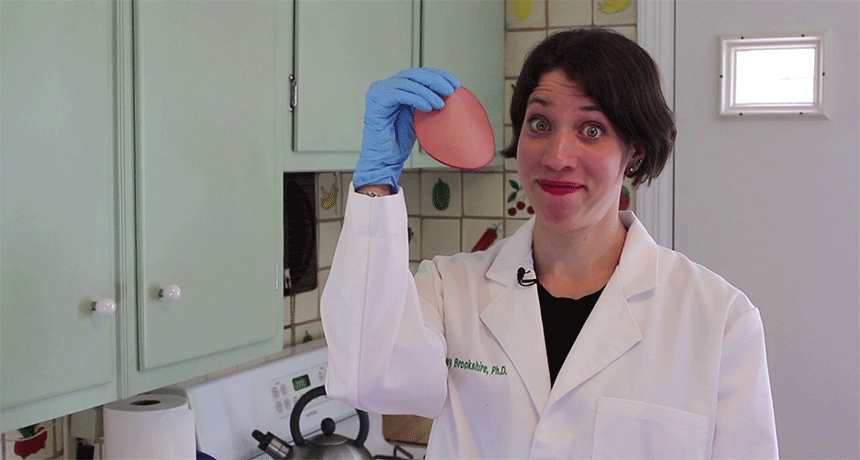
What's living on this meat and on my kitchen floor? I'm about to find out.
Explainr
Share this:
- Share via email (Opens in new window) Email
- Click to share on Facebook (Opens in new window) Facebook
- Click to share on X (Opens in new window) X
- Click to share on Pinterest (Opens in new window) Pinterest
- Click to share on Reddit (Opens in new window) Reddit
- Share to Google Classroom (Opens in new window) Google Classroom
- Click to print (Opens in new window) Print
This article is one of a series of Experiments meant to teach students about how science is done, from generating a hypothesis to designing an experiment to analyzing the results with statistics. You can repeat the steps here and compare your results — or use this as inspiration to design your own experiment.
Many clumsy, hungry people have sworn by the five-second rule. This is the idea that if you drop a piece of food and pick it up before five seconds have passed, it’s still clean enough to safely eat (at least, if it doesn’t have any hairs or obvious dirt on it). But are bacteria really polite enough to wait five seconds before hopping on board?
We’re putting this five-second rule to the test in the latest DIY Science video. And in our first blog post, we came up with a hypothesis and figured out how many conditions we would need to test in that experiment.
Before we get to dropping food, though, we need a way to measure how clean or dirty that food becomes. (We also need supplies. Check the end of this post to see a full list of what’s needed and how much it all costs.)
Bacteria are small. We can’t see them with the unaided eye. So how will we keep count? We’ll need to culture any microbes on the food. That means growing them into colonies that are large enough to see.
To do that, we’ll transfer any bacteria from the food onto a substance they would like to eat. We used agar — a gel material made from algae, yeast or animal proteins. It comes as a liquid or a powder. The powdered form must be mixed with distilled water to create the gel. Here’s how:
- Place 6 grams (0.2 ounce) of agar powder in a clean glass or beaker and add 100 milliliters (3.4 ounces) of distilled water.
- Stir the mix until the agar has dissolved completely.
- Microwave the mix on high until it comes to a frothy boil (about 45 seconds). Be careful! The glass will be very hot.
- Take out the glass, stir the contents and then microwave it again until the mixture boils (another 30 seconds). By this point, the agar should be a golden color and smell a bit like meat.
- Let the mixture cool until the glass is safe to touch.
- Pour the liquid into petri dishes — shallow plastic dishes used to grow bacteria. The agar should cover the bottom of each dish.
- Put each dish on a towel to dry, partially covered by its lid. The agar will start to firm in about 10 to 20 minutes.
Once the dishes are dry, they can be used right away or stored in plastic bags in the refrigerator. Before you start your experiment, label your petri dishes with a permanent marker to make sure you can keep track of which plate is which. I used a system for mine that included the floor I was testing (clean or dirty), the time (five or 50 seconds) and the plate number.
Keep it clean!
Bacteria are everywhere. They’re on the floor, in the air and on your hands. For our experiment, though, we had to make sure that the bacteria that grew on the plates came only from the dropped food — not from anywhere else.
To lessen the chance the experiment would be contaminated, I wore a lab coat and lab gloves (you can buy gloves made of latex or nitrile that you throw away after one use). Any glass or spoons were boiled in a pot of water with a little bit of bleach, to ensure they were completely clean. And I used a spray bottle containing 70 percent ethanol — a type of alcohol — and 30 percent water to clean any surface used, wiping everything dry with fresh paper towels.
Lit candles placed around the experiment also helped to keep other microbes away. Candle flames bring in cooler air from below. As it warms, this air rises, creating a small updraft — an air current moving toward the ceiling. This should help prevent germs in the air from settling on the meat or agar.
Make sure you have an adult around if you’re going to work around open flames. Also, don’t play with the spray bottle! Ethanol will cause plenty of misery if it gets in your eyes.
Bologna bombs away!
In our previous post, we determined that we will need six groups of plates — one group for each test condition. We are also making six replicates of each test. That gives us a need for 36 plates. There’s a control with no bologna and a control slice of undropped meat. There is also bologna dropped on clean and dirty sections of floor for either five or 50 seconds.
For the clean section, I wiped down a floor tile as carefully as possible with an ethanol-water mixture. For the dirty floor, I smeared coffee grounds, eggs, vegetable parts and fruit cores onto a tile (definitely the best part). Then I wiped the mess off so the floor tile looked clean.
I cut the lunch meat into quarters and dropped these pieces onto the clean and dirty floor tiles, waiting five or 50 seconds before picking them up. For the clean tile, I made sure to re-clean the tile in between each drop. Each time I picked up a piece of dropped bologna, I rubbed a cotton swab six times all over the side that had touched the floor. For my control — where nothing happened at all — I dipped a cotton swab in a small beaker of distilled water.
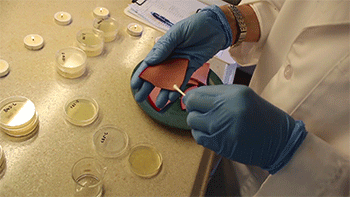

I now carefully dragged the cotton swab from each sample across an agar plate in a zigzag pattern. I then turned the plate 90 degrees (about a quarter of a turn) and repeated the zigzag swab. I repeated this turn-and-zigzag action twice more. That ensured complete coverage of the plate.
Microbes can be found in almost any environment. But we’re most concerned with ones that might make us sick. These germs will be found among the microbes that can grow at a human body temperature, 37° Celsius (98.6° Fahrenheit). So we need a way to keep our petri dishes at that temperature to let the microbes grow.
That means we need an incubator — a device that keeps a constant temperature. Lab incubators can be very expensive. Cheap incubators meant for hatching chicken eggs are available for about $20. But you build one on your own for even less. This slideshow will tell you how. (Hint: Make the incubator at least a week before you need it because you may need a few days to figure out how many holes it will need to maintain a stable temperature inside.)


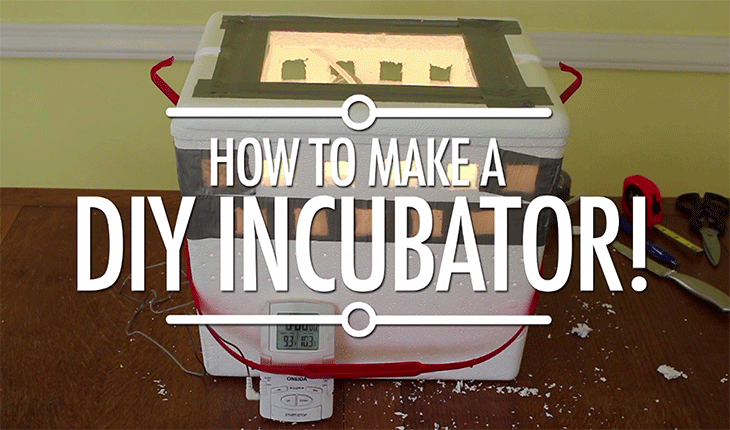
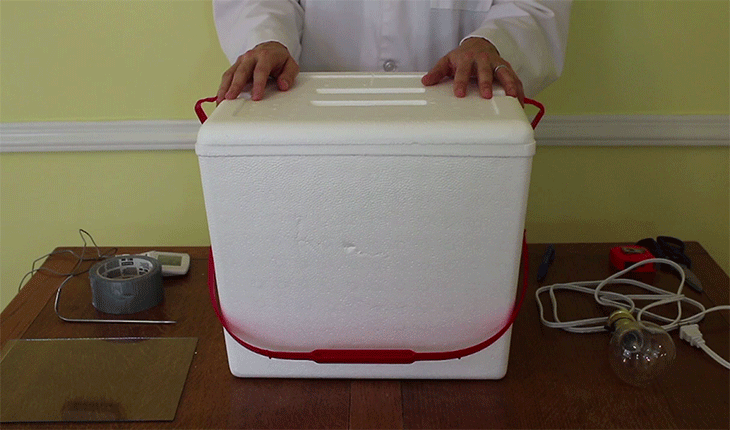
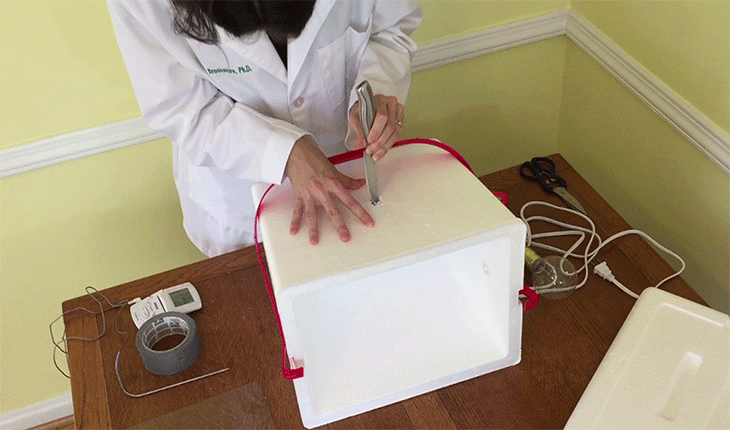
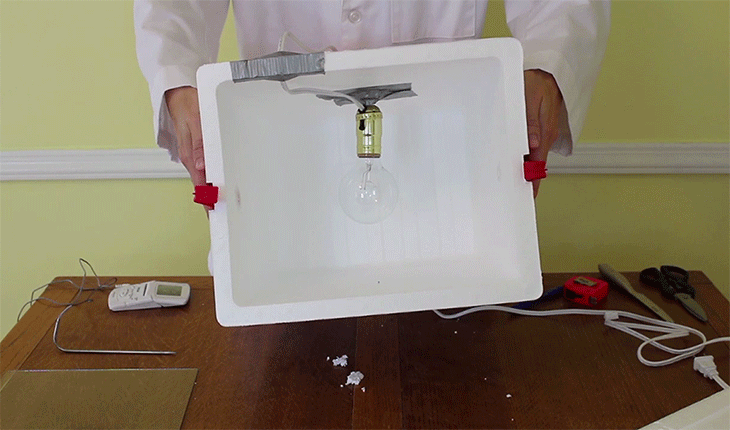
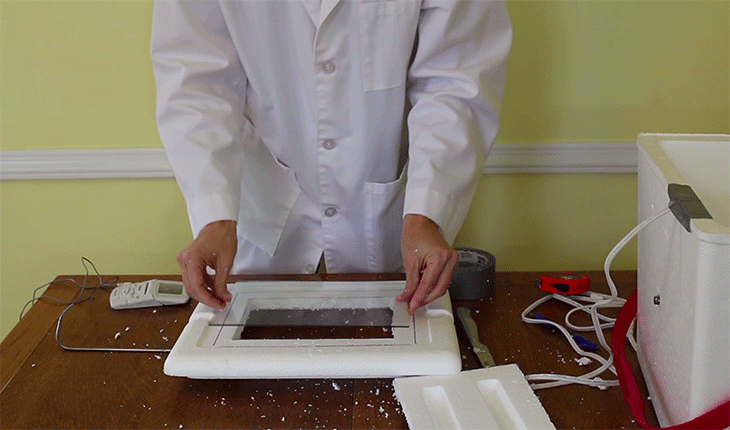
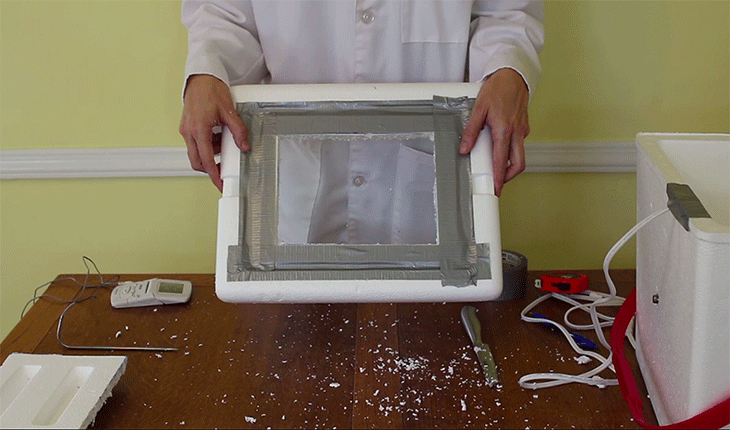
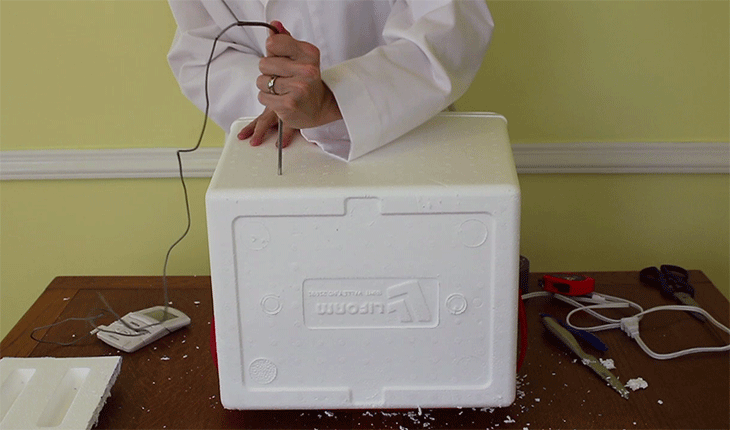
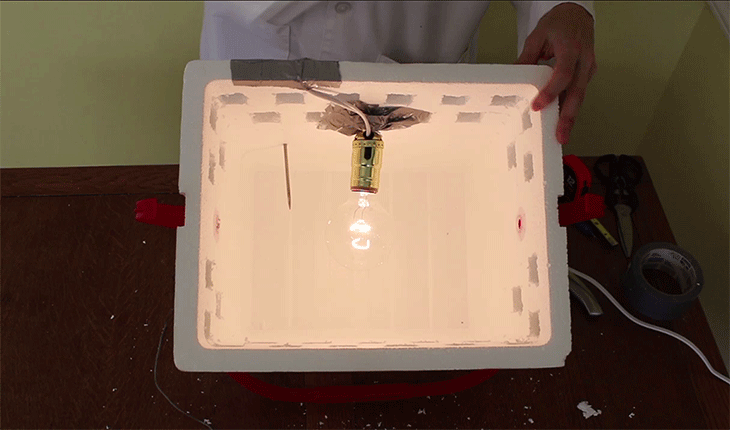
After the experiment, I placed the petri dishes in the incubator, upside down. As the plates warm in the incubator, any liquid in them will start to evaporate. The agar could dry out, and then the microbes might not grow. With the plates upside down, any water will rise onto the agar. Place a cup of distilled water in the incubator. It will keep the air inside humid and microbe-friendly.
Every 24 hours for the next three days, I removed each dish and took a picture of it with a smartphone. Those images will be necessary for counting the colonies.
In the next blog post, you’ll find out how many colonies of microbes grew on those plates.
Materials list
For the experiment
- 70 percent ethanol ($2.19)
- Roll of paper towels ($0.98)
- Permanent marker (to label petri dishes) ($2.97)
- Nitrile or latex gloves ($4.24)
- Cotton-tipped swabs ($1.88)
- Candles ($9.99)
- 60 x 15 mm sterile petri dishes (two packs of 20) ($6.35 per pack)
- Glass beakers ($21.70)
- Nutrient agar ($49.95)
- Distilled water ($1.00)
- Microwave ($35.00)
- Food for dropping (bologna, one package) ($2.99)
- A digital or smartphone camera
- Ruler (metric) ($0.99)
- Small digital scale ($11.85)
- A book of matches
For the incubator
- Styrofoam cooler ($7.47)
- 25-watt lightbulb and wiring ($6.47)
- Remote digital thermometer ($14.48)
- Knife ($3.19)
- Duct tape ($2.94)
- 28 cm x 35.5 cm (or 11 x 14 inch) picture frame, glass or plastic front only ($1.99)
Explainr







